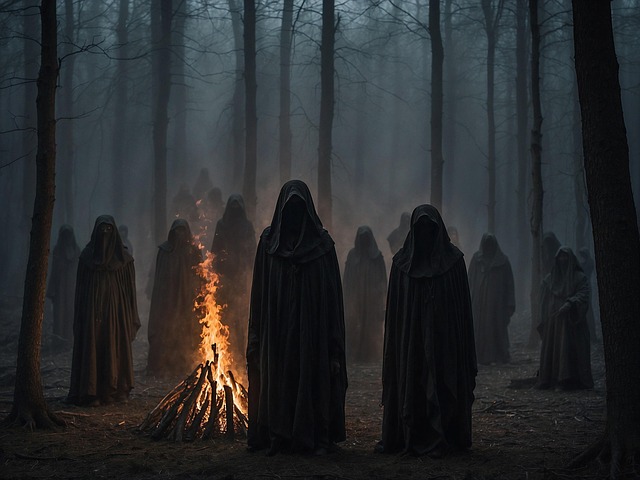Last Updated on May 5, 2025 by The Unbounded Thinker
From time immemorial, societies across ancient India, Africa, Arabia, Europe, and the Americas, have shared stories of mermaids, which were known by different names across these regions, but were consistently described as half-human, half-fish beings.
Although mermaids were mainly featured in ancient myths, legends, or folklore, ancient societies claimed that they existed. They did not merely believe in their existence, they knew with certainty that mermaids existed.
For the ancients, mermaids were not just mythical beings, but they were real creatures of the sea. The difference between belief and knowledge was clear. To them, mermaids were as real as any other part of the natural world, and stories about them were passed down as truths rather than imaginary ideas.
This certainty about the existence of mermaids was further evidenced by the fact that many ancient civilizations worshipped them as deities. For instance, the Babylonians worshipped Oannes, who was described as a being with the form of a fish but the head of a man.
The Syrians worshipped Atargatis, a sea goddess, who was half-woman and half-fish. West Africans worshipped the Mami Wata, who were described as beings with human heads and lower bodies of fish.
The early Christian church revered the deification of mermaids among ancient cultures so much that it incorporated mermaid imagery into its architecture. Initially, the mermaid carvings and paintings in early churches symbolized self-control, piety, and God’s ability to change the laws of nature, but later, they symbolized lust and temptation.
Why did the mermaid find its way into the early Christian churches? Was it the church’s way of attracting pagans by showing them that it respects their deities or did the mermaids resonate with Christian beliefs about baptism and the divine feminine? Was it because many churches were built by fishermen who might have seen mermaids while fishing, or was it because the early church leaders were aware of the mermaids’ existence and their mystical powers?
All ancient societies that claimed that mermaids existed revealed that mermaids had mystical powers, which involved, superstrength, controlling the seas, summoning storms, singing songs that mesmerized those who heard them, and the ability to communicate with sea creatures. It was impossible to convince the ancients that mermaids lacked such powers and that they did not exist.
Interestingly, the belief in mermaids was not confined to ancient times. From the fifteenth century onward, stories about mermaids persisted despite the rise of science and technology as many people reported seeing mysterious sea beings with human heads and fish-like tails.
Lori Hile, in her book, “Mermaids:Solving Mysteries With Science”, describes the following sightings.
“As English explorer Henry Hudson sailed through a group of islands north of Russia in 1608, two members of his crew spied an odd-looking woman in the water. They called up other crew members, and by the time the men arrived, the figure was hovering by the side of the ship, staring at the men. As waves bumped the boat, the creature flipped over, allowing the men to see her from the navel up. She was as large as a man, but she had the breasts of a woman and long black hair cascading down her ivory back. When she dived back into the water, the men were amazed to see that she had a tail like a porpoise, dotted with speckles.”
“In 1614, another English captain, John Smith, noticed a lovely lady swimming gracefully near the Caribbean coast. He found her large eyes, short nose, long ears, and green hair, attractive and he even experienced pangs of love. As he leaned down from his ship to talk with the uncommon woman, Smith was shocked to see that, from the waist down, the woman “gave way to the fish.”
“In 1967, a ferryboat filled with passengers was traveling between Vancouver and the city of Victoria, on Vancouver Island, in Canada. On this trip full of beautiful scenery, travelers often observe wildlife, including bald eagles, seals, and orcas. But this time, as the ferry entered Active Pass, a narrow passage between islands, several passengers were surprised to see an unfamiliar creature sitting on some rocks.
As they moved closer, they could see that the figure had long blonde hair and the lower body of a porpoise! The mermaid was calmly munching on a piece of salmon. A plane buzzed overhead around the same time, and a passenger snapped a picture of the creature. It was published along with news of the sighting in a local newspaper.”
One could question such sightings, arguing that they are simply products of the mind, which can be influenced by images and stories it has been exposed to. But most of these sightings came from individuals who had never been exposed to stories of mermaids. This makes the sightings intriguing, as they described beings remarkably similar to those depicted in ancient myths, suggesting that they were more than just the result of imagination.
Instead of dismissing these reports by claiming that they are false just because many people don’t see mermaids today, we should ask ourselves whether something has changed in the way we connect with the unseen. Maybe our modern way of life has cut us off from the realities that ancient people experienced
I argue that many people today don’t see mermaids because an extreme focus on materialism has made the world denser, making it difficult for less dense spiritual beings such as mermaids to materialize and become visible. I also believe the world is becoming more three-dimensional as people shift from spirituality to science, making it difficult for four-dimensional beings like mermaids to physically materialize.
Additionally, I think that the extreme focus on materialism has blocked our spiritual eye, making it impossible to see such creatures.
The truth about mermaids is that mermaids might exist. The fact that ancient cultures who were separated by thousands of kilometers shared similar stories about mermaids indicates that they might exist. Moreover, the several sightings by many people across the world, including those who knew nothing about mermaids, show that such creatures might be living in the sea. Finally, considering that the world is not a mechanical place but a spiritual dimension, it is entirely sensible to argue that a plethora of spiritual beings beyond your imagination, including mermaids, might exist.
I wish you all the best on your journey of discovery.







